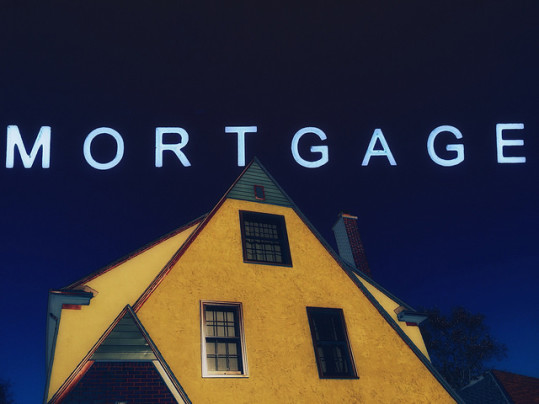Because they are vital to the health of the housing market, first-time home buyers are a closely watched group. In recent years, they have been less active but there is new research indicating that the number of first timers is spiking. So what can new home buyers expect their first time through the home buying process? According to economist Jonathan Smoke, they may face more challenges in this market but can improve their chances by getting their finances in order, raising their credit score above 700, and planning for a down payment. “The market has seen growth despite higher prices in part because of pent-up demand from very qualified buyers who were able to meet the challenging mortgage qualifications that are the norm these days,” Smoke says. “A key question for the months ahead is whether a higher share of first-time buyers is ready or capable of qualifying for a loan and closing on a home.” In other words, if these potential buyers can get approved for a mortgage, there could be an upcoming surge in sales to younger Americans. The good news is mortgage credit has generally been more available over the past few years. Unfortunately, the flip side is that, at the same time, a higher percentage of buyers report having trouble raising their credit score and difficulty saving for a down payment.
Archive for September 2016
More Americans Say It’s A Good Time To Buy
According to Fannie Mae’s August 2016 Home Purchase Sentiment Index, the number of Americans who say it’s a good time to buy a house rose from the month before, marking three straight months of improvement. It’s a sign that an increasing number of potential buyers are feeling secure in their jobs, optimistic about their futures, and eager to take advantage of mortgage rates still near record lows. It also bodes well for the housing market as it nears the end of its busiest season. Overall, the survey found sentiment essentially flat from the month before, when it reached an all-time high. Doug Duncan, Fannie Mae’s senior vice president and chief economist, said Americans are optimistic heading into the fall. “Consumers have a fairly optimistic, 12-month outlook on housing at the end of the summer home-buying season, supported by increased job confidence and more favorable expectations regarding their personal financial situations compared with this time last year,” Duncan said. “The return to a slight upward trend in the HPSI during the spring and summer is, thus far, in line with our forecast, which calls for 4 percent growth in home sales in 2016 to the best level since 2006 and continued improvement for 2017.” More here.
Mortgage Rates Mostly Flat In Latest Survey
The Mortgage Bankers Association’s Weekly Applications Survey has been conducted since 1990 and covers 75 percent of all retail residential mortgage applications. For this reason, it is a closely followed measure of where mortgage rates and application demand are headed. According to the most recent survey, average mortgage rates were mostly flat last week across all loan categories, including 30-year fixed-rate mortgages with both conforming and jumbo balances, loans backed by the Federal Housing Administration, and 15-year fixed-rate loans. As a result, both refinance and purchase application demand were also relatively flat from the week before. However, compared to last year both are up. Refinance demand is now 43 percent higher than at the same time last year and demand for loans to buy homes is up 7 percent. Michael Fratantoni, MBA’s chief economist, told CNBC the year-over-year improvement has been seen on both ends of the market. “Although the pace of job growth slowed in August, purchase volume continues to run strong at 7 percent above last year at this time,” Fratantoni said. “This strength is broad based, with growth at both the high and low ends of the market.” More here.
The Home Features Buyers Want Most
Whenever potential home buyers are asked what they most want in a new house, their responses tend to favor utility and function. It seems, when looking for a house to buy, luxury takes a backseat to lower energy bills and more storage space for most buyers. In fact, according to a recent survey of home shoppers, more than 80 percent agreed on a few familiar features they desired above all others. For example, a separate laundry room was named by 92 percent of buyers as a must in their next house. Having a dedicated area for collecting and cleaning laundry was a nearly unanimous choice and popular across all age groups and demographics. Energy efficient appliances and windows were also near the top of the list, as was garage storage space – proving that, more than a gold-trimmed master suite, Americans want lower bills and places to store their stuff. But not all of the most-loved home features were purely utilitarian. In fact, 84 percent of respondents named outdoor living space among their must haves. A nice yard, patio, or deck provides outside space to enjoy and a place to entertain friends and family. Rounding out the list, exterior lighting, an eat-in kitchen, and hardwood floors were all near the top of buyers’ wish lists. More here.
Majority Of Markets Show Improving Trend
Of the top 100 metropolitan areas included in Freddie Mac’s Multi-Indicator Market Index, 84 percent are showing an improving three-month trend. The index – which compares current housing conditions to long-term norms – also found 42 of the 50 states on the upswing. Len Kiefer, Freddie Mac’s deputy chief economist, says it was the 50th straight month the index registered year-over-year gains. “Nationally, MiMi in June was largely unchanged at 85, marking a 5.76 percent year-over-year increase and the 50th consecutive month of year-over-year increases,” Kiefer said. “Low mortgage rates and consistent job gains are helping to bolster home buyer demand, which is reflected in the MiMi purchase applications indicator. Purchase applications, as measured by MiMi, rose 1.75 percent month-over-month in June to the highest level since December 2007.” But though the index’s results are definitely positive, the upward trend was even stronger last year at this time when all of the top 100 metros were showing gains. Also in the report, the most improved metropolitan areas since last year at this time include Orlando, Denver, Tampa, Chattanooga, and Dallas. Among states, Oregon, Colorado, Florida, Tennessee, and New Jersey lead the list. More here.
Pending Home Sales Bounce Back In July
The National Association of Realtors’ Pending Home Sales Index measures the number of contracts to buy homes each month. Because the index tracks contract signings, and not closings, it is a good indicator of future existing home sales and an important barometer for the housing market. In July, pending sales rose 1.3 percent and reached the second highest reading in more than a decade. Lawrence Yun, NAR’s chief economist, says the news is encouraging but things could be even better. “Amidst tight inventory conditions that have lingered the entire summer, contract activity last month was able to pick up at least modestly in a majority of areas,” Yun said. “More home shoppers having success is good news for the housing market heading into the fall, but buyers still have few choices and little time before deciding to make an offer on a home available for sale. There’s little doubt there’d be more sales activity right now if there were more affordable listings on the market.” Regionally, the West, South, and Northeast all saw increases, with the West registering the largest gains. The Midwest was the only region that didn’t improve month-over-month. More here.
Mortgage Rates Hold Steady Near Lows
According to the Mortgage Bankers Association’s Weekly Applications Survey, average mortgage rates were relatively flat last week across all loan categories, including 30-year fixed-rate mortgages with both conforming and jumbo balances, loans backed by the Federal Housing Administration, and 15-year fixed-rate loans. With rates still hovering just above historic lows, demand for mortgage loan applications saw a bump over the week before. In fact, the seasonally adjusted purchase index rose 1 percent from the week before, while the refinance index – which is generally more sensitive to rate movement – saw a 4 percent increase. Michael Fratantoni, MBA’s chief economist, says with rates as low as they are, there should be an even greater increase in the number of borrowers taking advantage of favorable conditions. “The last time rates were at these levels, the refi index was almost twice as high,” Fratantoni told CNBC. “At these rate levels, there are borrowers who still stand to benefit, but there are many homeowners who have already taken advantage of refinancing and are not yet incentivized to do it again.” The MBA’s weekly survey has been conducted since 1990 and covers 75 percent of all retail residential mortgage applications. More here.







